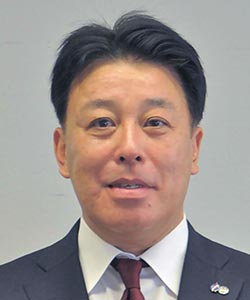
Professor, Graduate School of Biomedical and Health Sciences, Hiroshima University
Louis Yuge
The Society for Regenerative Medicine and Rehabilitation was established in 2014 with the aim of advancing science and disseminating knowledge related to regenerative medicine, rehabilitation medicine, robotics, and brain science, and to contribute to the development of academic culture. Four years later, in 2018, when the 5th regular meeting was held, the Society evolved from a research group into the “Japanese Society for Regenerative Medicine and Rehabilitation”. We would like to take this opportunity to thank our many members, supporting hospitals and companies for their support.
We believe that regenerative medicine and rehabilitation (utilization of robots) are indispensable “collaboration” for the complete cure of diseases, just like the two wheels of a car.
Regenerative medicine using stem cells such as induced pluripotent stem cells (iPS cells), embryonic stem cells (ES cells), and somatic stem cells has begun as a new treatment for diseases that are difficult to treat. In Japan, the enactment of the Law for the Promotion of Regenerative Medicine has accelerated the implementation of regenerative medicine in society from the national perspective of creating a new medical industry.
Clinical trials have already begun in Japan for cerebrovascular disorders, spinal cord injury, cartilage damage, heart failure, retinal degenerative diseases, and Parkinson’s disease. Initially, regenerative medicine was thought to be a curative therapy, but as clinical trials progressed, the importance of rehabilitation became clear.
For example, in cerebrovascular disease, a major target disease for rehabilitation, clinical trials have reported that stem cell transplantation using mesenchymal stem cells promoted recovery of motor function and sensory impairment. Formation of a functional network between donor and host cells is necessary to maximize the effects of stem cell transplantation. Therefore, findings are beginning to emerge that the use of motor intervention and robotics after stem cell transplantation can further promote recovery. This is not limited to nerve regeneration. Though rehabilitation has mainly focused on capacity impairment up to now, it is thought that an upstream approach to functional impairment will be necessary after the cell transplantation. In other words, the concept of rehabilitation will change in “Regenerative medicine x Rehabilitation”.
On the other hand, in the field of rehabilitation, the use of robots as a tool for rehabilitation has been expanding in recent years, but there is still room for development of robots that can be used in clinical practice.
In establishing the society, we intend to further develop it in light of the importance of research for the complete cure of diseases through regenerative medicine, the development of therapeutic methods, and the education of its principles. We sincerely hope that many researchers, medical professionals, and companies in the fields of regenerative medicine, rehabilitation medicine, robotics, and brain science will participate in the society.
